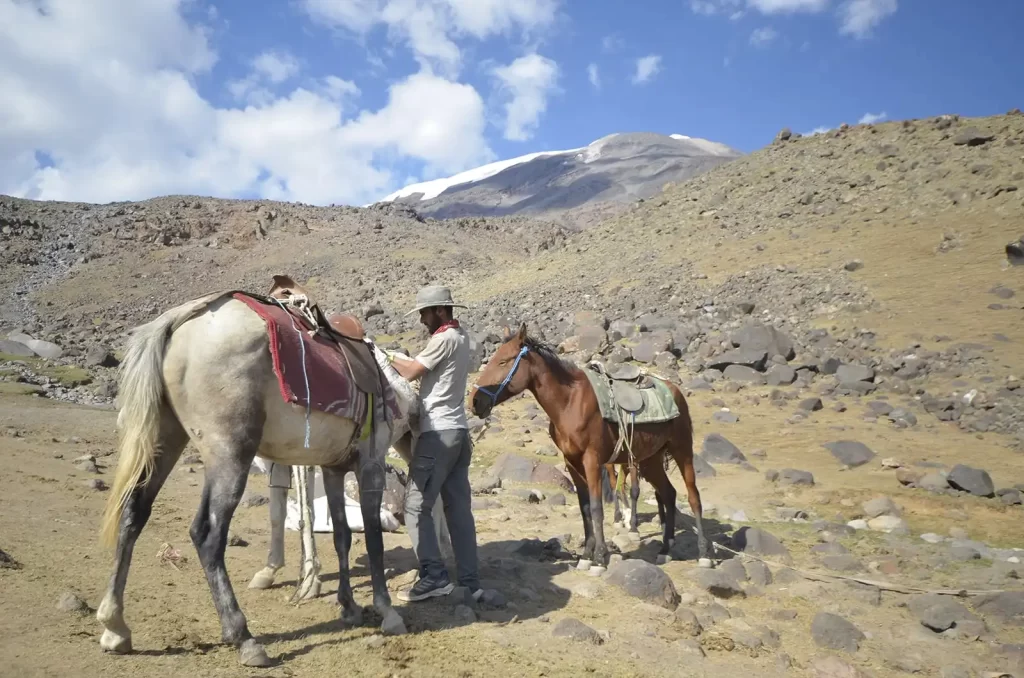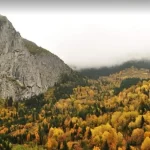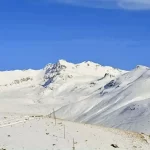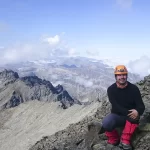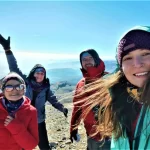Argeos Charter UIAA Declaration
Argeos Charter; Argeos – the ancient Latin name for Mount Erciyes in Kayseri, Turkey where the charter was finalised in June, 2005. Being aware of the importance and grandeur of mountain landscapes the Access and Conservation Commission, at the iistigation of Stefano Tirinzoni of the CAI, has produced the following simple guidelines for sustainable mountain tourism in countries where mountain tourism is in its infancy.
The guide covers the following key areas: Understanding and protecting the environment, preserving cultural identity and tourism in the mountains.
Determining factors. If new huts are built, modern ecological methods of construction should be employed, such as utilising the energy of the sun through photovoltaic panels for electricity, and producing hot water from solar panels.
- Promote the restoration of old civil and rural structures so that they can be used as tourist accommodation; often tourists prefer to stay in old traditional buildings instead of new ones. However, it is important to guarantee cleanliness, hygiene and essential facilities (toilet, washbasin, shower) so that modern standards of health and safety are met.
- Provision of way-marked paths enable exploration of the region without guides.
- Create promotional materials (both on paper and electronically) to describe the region’s trails and features of outstanding natural beauty.
- Ensure regulations for hunting and fishing are linked to raising awareness of conservation and the protection and promotion of the natural environment.
Guidelines
Introduction Being aware of the importance and grandeur of mountain landscapes the Access and Conservation Commission, at the instigation of Stefano Tirinzoni of the CAI, has produced the following simple guidelines for sustainable mountain tourism in countries where mountain tourism is in its infancy. By reasonable adherence to these precepts the development of such potential may avoid the common errors and omissions which have marred a century of development in the classic Alpine regions of Europe. No one is better able to translate theory into practice than Stefano Tirinzoni, a tireless worker for the Access and Conservation Commission, an innovative and inspired architect, and an energetic and bold alpinist. Robert Pettigrew, President of the Commission.
Understanding and protecting the environment
Every local community must be fully aware of its local environment in order to promote a successful sustainable development policy.
The Community should focus on:
Water
Water: in the mountains water is a uniquely precious resource and characterises mountain landscapes. Extraction policies for hydro-electric usage need to be well estimated and a constant and abundant quantity of water must be guaranteed in streams and rivers.
Biodiversity
Biodiversity: in the most mountainous regions there is a high level of biodiversity. This precious diversity, often specific to mountain environments, must not be endangered by the development of tourism.
Solid waste
Solid waste: must always be properly and hygienically dispersed; if an open sky dump is created, regulations to control and manage it must be developed. Waste not eliminated must be transported away.
Liquid waste
Liquid waste: sewerage plants are indispensable: collecting and purifying liquid waste and avoiding pollution of water streams. At high altitude, where you cannot use biological purification plants, special habitats need to be created to break down the waste, or contain it before transportation.
Agriculture
Agriculture: typical cultivations (fields, wood, pastures…) need to be encouraged, because they both form and characterise the landscape, culture and history of the mountains, as well as creating habitats for wildlife and contributing to biodiversity.
Infrastructure (roads, railways, ski areas): the construction of new infrastructure in the mountains must always be well evaluated, planned and constructed. It is important to note that sporting developments that improve the economic viability of mountain areas do not have to disfigure the landscape and that they should be located in consultation with communities and other user groups.
Human presence: people who live in the mountains always modify the environment with paths, roads, bridges, houses, churches, fortresses, all of which are an expression of the cultural identity of a population. There is the knowledge, skills and means to restore ancient constructions; it is important to promote local training in traditional crafts, to teach local designers and workers how to use typical materials and methods.
Preserving cultural identity
Tourism in the mountains includes a desire to experience traditional cultures. It is important to prevent social and economic development from destroying local traditions, so that typical languages, clothes, and handicrafts are found within mountain environments and local cultures are sustained.
Economic development: it is important to prevent economic wellness and globalisation from destroying local environments and local cultures.
Equal opportunities: the preservation of local traditions need not mean the conversion of mountain regions into open-air museums. The local population’s desire to lead a modern life with equal opportunities must also be respected.
Promote local cultures: encouragement to study local history and typical traditions; historical and ethnographic research should be supported together with the publication of books.
Promote local traditions: local usages, such as religious beliefs, and celebratory festivals, must be maintained and supported.
Promote typical handicrafts: the production of typical handicrafts needs to be promoted, and the foundation of craft training workshops where an older generation of skilled artists and craftsmen can instruct and train the younger generation in the production of traditional mountain artefacts.
Tourism in the mountains
Mountain tourism can really help the economic development of mountain areas. Free access to the mountains must be guaranteed and limitations must be well considered, according to each case and put into effect only when necessary. Raising awareness of issues rather than regulating access is generally most effective in conserving the natural environment.
Here are some further suggestions to develop a sustainable mountain tourism policy:
- Promote the professional training of local mountain guides and the creation of local travel agencies, to protect the area from exploitation of mountain tourism by multi-national agencies.
- Build huts and bivouacs along well-frequented paths where possible by the restoration of existing structures. However, new provision must be the exception rather than the rule. Very careful assessment is necessary to avoid spoliation of the wilderness. Remoteness of the location, distance from the road or railhead, and popularity of the area are all…
Conclusions
These guidelines are intended to be applied, where appropriate, to communities newly exposed to mountain tourism who can then adapt them to their particular characteristics and needs. Tourism in the mountains is vitally important to ensure sustainable economic and social development for people living in mountain regions. At the same time, it is important to prevent development from destroying the environment and local cultures (as has often happened in Europe and other places around the world). Mountain tourism has great potential to create vibrant communities in mountain regions and to increase their standard of living. People living in the mountains are an important part of these areas. In some cases it may be important to create ‘parks’ to raise capital to conserve flora, animals, environment and local traditions and to promote access, enjoyment and understanding of an area. Tourists and the people of tomorrow will surely need to escape from the congestion of towns and cities to enjoy nature; the mountains will be both their inspiration and spiritual fulfilment.
The paper can be viewed and downloaded here.
This pamphlet was produced by Stefano Tirinzoni, Joerg Eberlein, Clare Bond and Bob Pettigrew with help and support from the UIAA Access and Conservation Commission. Stefano Tirinzoni acknowledges the kind assistance of Beatrice Martelli. Design and layout by Clare Bond. Argeos – the ancient latin name for Mount Erciyes in Kayseri, Turkey where the charter was finalised in June, 2005. UIAA Access and Conservation Commission ‘ARGEOS CHARTER’ Guidelines for sustainable mountain tourism in countries with development potential.
Reference: UIAA

